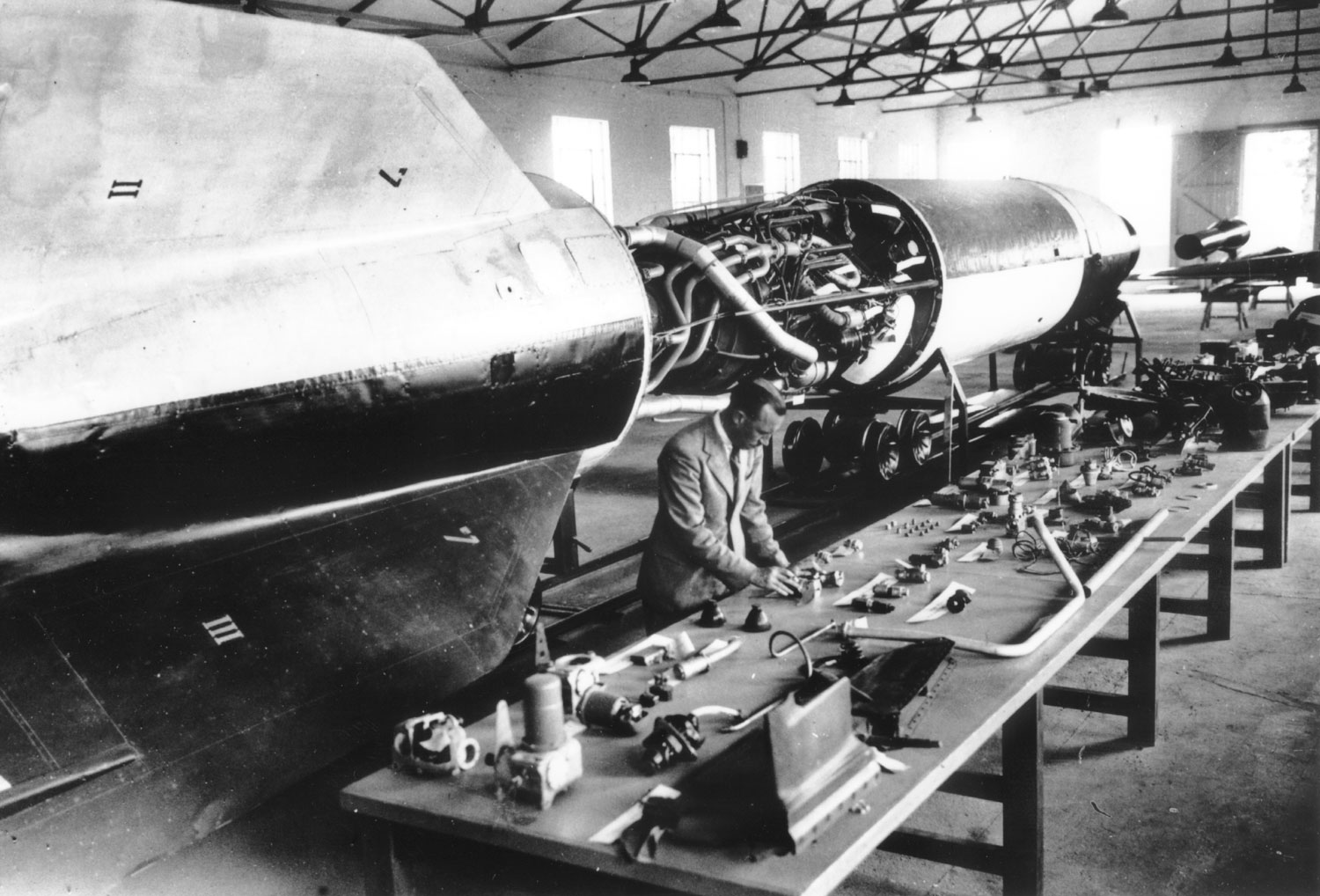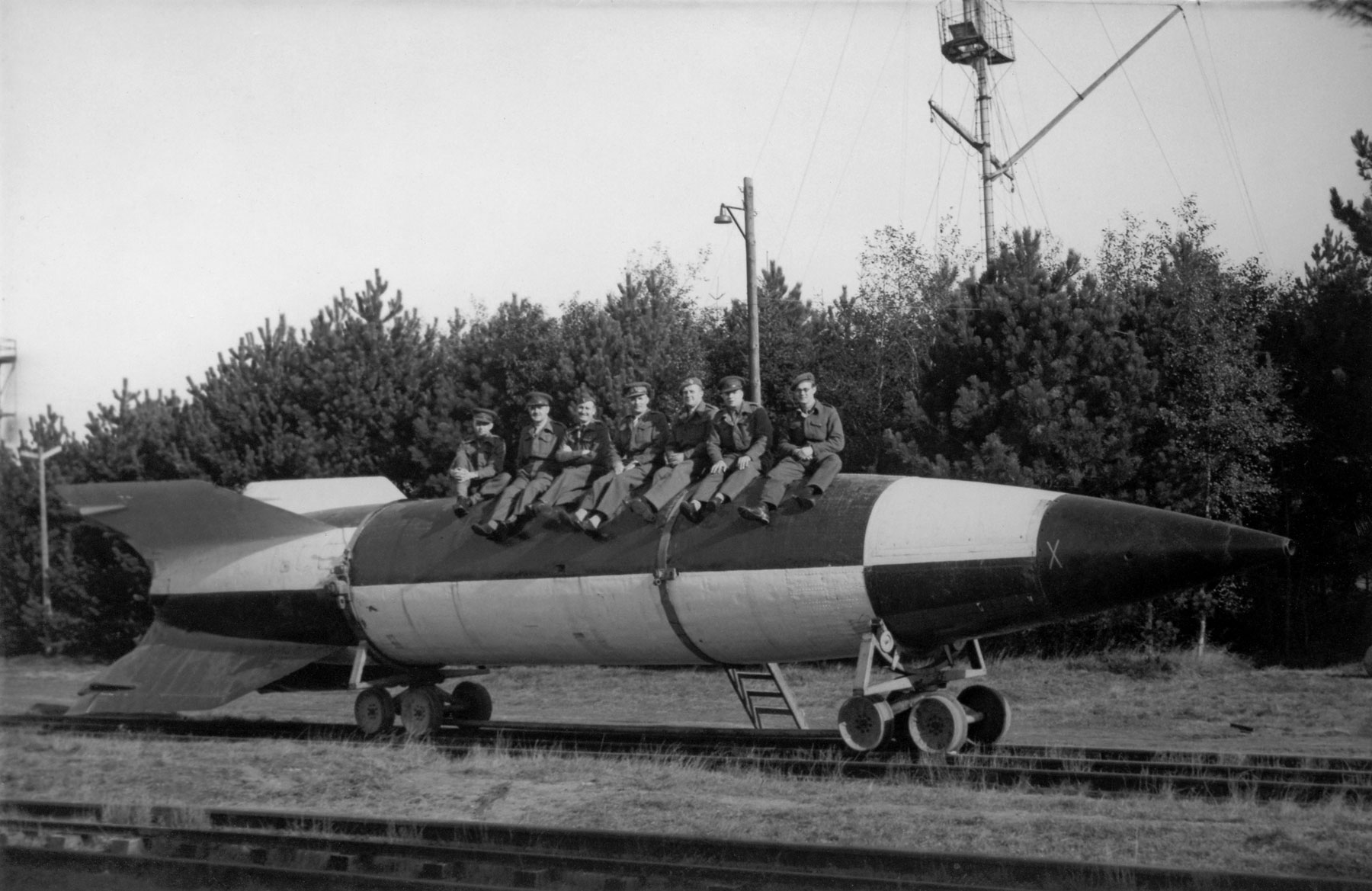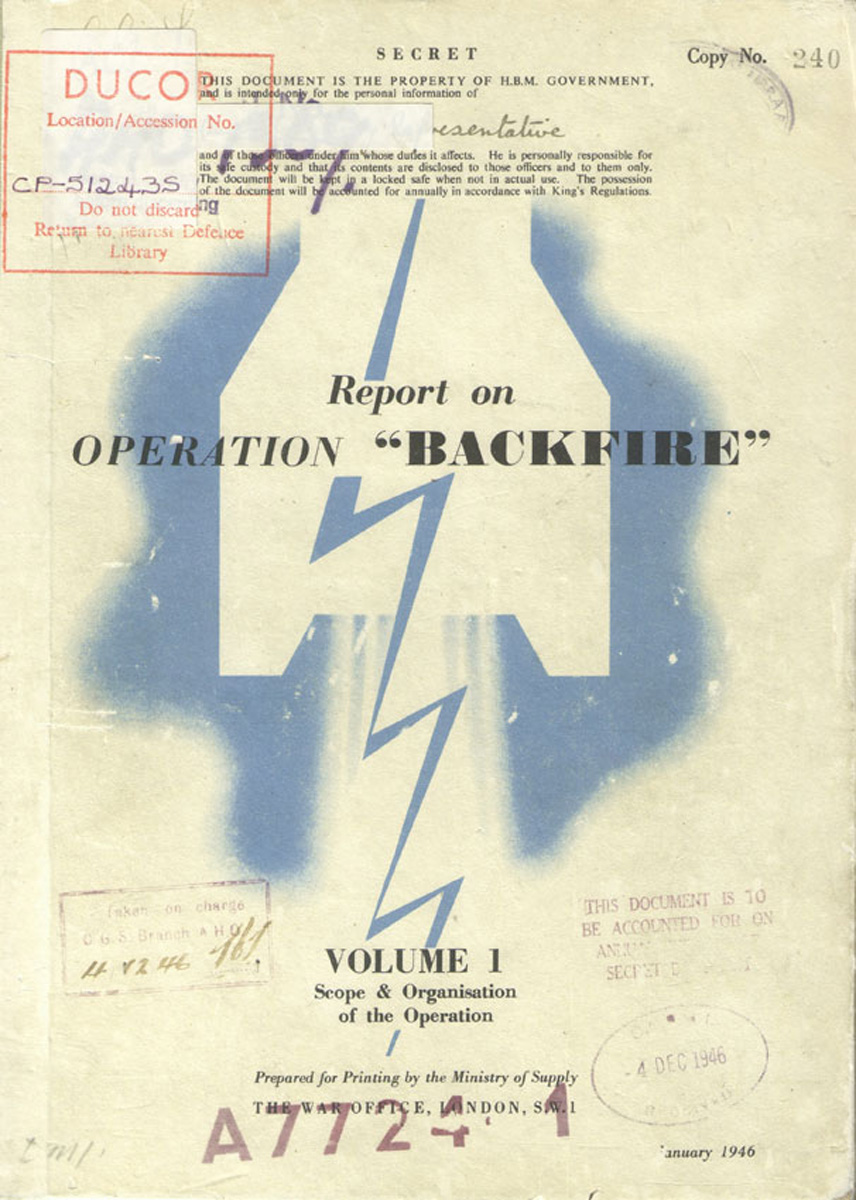|
Posted: 10/31/2014 8:45:08 PM EDT
Following the collapse of Nazi Germany, the Allies spent lots of time and effort ferreting out German scientists and their achievements. One of the high interest items was the A-4 rocket (commonly known as the V-2), which had been launched to deadly effect on London and Antwerp. Upon capturing the Mittelwerke plant in the Nordhausen area, where German rocketry was based after the evacuation of Peenemunde, the Americans grabbed V-2 technology wholesale. They shipped many rockets, documents, and rocket scientists off to White Sands, New Mexico. The British were a mite upset that the Americans were taking all this away, so General Eisenhower arranged to let the Brits lead European testing efforts for the V-2 rockets that remained.
British V-2 testing at Cuxhaven, October 1945:

The British scrounged up some of the remaining rockets, equipment, and personnel, and set about testing the V-2 rockets, under the code name Operation Backfire. The testing was done in October 1945 in the town of Cuxhaven, and the rockets were launched over the North Sea.
Location map of Cuxhaven:

It was a challenging effort for the Brits to get started.
"A comprehensive evaluation of the A-4/V-2 had never been undertaken, not even by the Germans. German security would not allow such broad coverage, feeling that no single person should know more about the entire system than the absolute minimum required for their own duties. The captured Germans were fairly willing to demonstrate their V-2 firing procedures and soon around 130-150 Peenemünde scientists, along with approximately 100 V-2 firing troops and 600 ordinary POWs were transported to Cuxhaven. To keep the Germans happy, permission was obtained to increase their pay and rations, and towards the end of the operation, the Germans would receive a bonus for their work.
Allied air attacks and German sabotage, not to mention the American heist at the Mittelwerk, had consumed almost every assembled V-2 in Europe. Therefore, finding intact V-2s was a great problem. A small British advance party, led by Colonel T. R. B. Sanders, secured several missiles outside of Nordhausen before the Americans arrived in the area, but more were needed. The Americans later removed enough parts from the underground Mittelwerk facility to assemble 70 to 100 rockets in the United States. After the Americans were finished, the British were given another opportunity to salvage what was left before the Russians took over the Mittelwerk. At Nordhausen the British scoured over what remained at the plant. They found a multitude of parts; however, no complete subassemblies remained. Later, a small group of intact V-2s was later discovered on an abandoned railway shipment in the British zone of occupation. Officials determined they had enough rockets and parts to assemble about eight complete rockets for testing. However, they also found that they were missing several key rocket components as well as the support vehicles needed to fuel and launch the rockets.
After checking all the former operational launching sites in Holland and Germany, not one single piece of equipment was found remaining. The retreating German rocket troops had made their way eastwards in the face of the Allied advance and scattered their equipment all along the route. What followed was an amazing search all over Europe for the missing items. Search parties were sent out everywhere with soldiers who were fluent in German, each with a convoy of trucks, to seek out the missing parts. The logistics of acquiring the needed flight hardware were not necessarily difficult; however, the acquisition of usable ground support equipment was certainly troublesome.
Luckily, the British were able to locate 18 incomplete rockets on an abandoned rail shipment outside of Jerxheim in the British zone. In late August, twelve more rockets were found near Lesse, including one almost complete specimen. After the rockets were recovered, the British set about locating various ground support equipment. This was done by interrogating the POWs for information about the whereabouts of control cars, fuel tankers, firing tables, transport and erection vehicles, test vehicles, generators, cranes, ladders, air compressors and other ancillary equipment, such as cables, connecting plugs, hoses and igniters. Most of this serviceable equipment was found in and around the areas of Lesse, Celle and Fallingbostel. It was to this locality that most of the equipment used by the launching troops from The Hague and Burgsteinfurt had been evacuated. The recovery of one critical piece of equipment, which had been dumped into a river, required the use of dredging machinery.
Additional equipment withdrawn from Peenemünde during the German evacuation and was found in the area near Nordhausen. When the hunt was finished, 400 railway cars and 70 Lancaster flights were used to bring the 250,000 parts and 60 specialized vehicles to Cuxhaven. However; no complete undamaged and serviceable rockets were found. The most elusive components were the batteries that powered the guidance gyros. Intact tail units were also very difficult to locate, and because of the difficulties in manufacturing the tail sections, some of the captured tails were transferred from American stockpiles after a request from the British. The liquid oxygen plant at Fassburg, 130 miles from Altenwalde, was opened again to produce liquid oxygen for the Backfire tests. Five 20-ton railway tankers were discovered containing 70 tons of ethyl-alcohol were found near Nordhausen and dispatched to Cuxhaven, with hydrogen-peroxide coming from reserves at Kiel."
http://www.v2rocket.com/start/chapters/backfire.html
V-2 rocket assembly:

Eventually, the British launched three V-2 rockets in October 1945, and in the process of doing so, put together the manuals for launch and use of these weapons. Ironically, since the ex-German rocket workers still wore their uniforms, much of the footage taken during these tests was later presented as having been taken by the Germans during the war.
British soldiers sitting on a V-2 rocket:
 The Brits put together a 5 volume report on their activities
The Brits put together a 5 volume report on their activities:
 Volume 1
Volume 2
Volume 3
Volume 4
Volume 5
v2rocket.com has a lot of good information
Volume 1
Volume 2
Volume 3
Volume 4
Volume 5
v2rocket.com has a lot of good information
|
 Win a FREE Membership!
Win a FREE Membership!